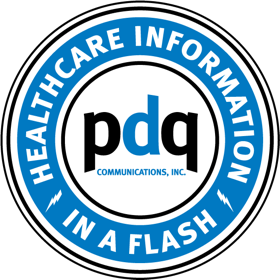Now that you’ve determined your ideal target audience and know what they’re looking for, how do you...
Perhaps the quickest way to ruin a marketing campaign aimed at healthcare professionals (HCPs) is to assume they all enjoy receiving the same content. Trying to engage a physician with the same content you’re sending to a nurse practitioner or physician associate is a strategy doomed to failure. When it comes to content in the healthcare marking space, one size most definitely does not fit all.
Which brings us to the topic of personalized marketing—using data to deliver a brand message specifically targeted to individuals. Personalized marketing is hot right now, and with good reason. According to research by Invesp, a conversion rate consultant group, open rates increase by 22% when something as simple as a subject line is personalized. And while that’s all well and good, increased open rates won’t matter if the content within that email addresses topics the recipient has no interest in.
HCPs, not unlike the rest of us, struggle with information overload and are oftentimes simply overwhelmed with content. That being the case, when they do receive information that is relevant and engaging, they are delighted and frequently moved to make sure they continue receiving information from that marketer. When the content is irrelevant, they stop opening emails from that sender altogether. It’s that simple.
Howdy Partner!
You might be hearing the term ‘information partner’ being tossed around of late, as that is the label HCPs are hanging on email marketers who are sending educational content about the healthcare space.
This is the exact kind of personalized marketing that is creating business opportunities and generating ROI. HCPs put a great deal of trust in credible and informative news sources, so this notion of thinking about a marketer as an information partner is worth hitching your wagon to.
"For an overwhelming percentage of HCPs, email is the preferred channel for receiving industry news."
Specifically, HCPs require their information partners to provide industry knowledge that’s educational. They want content that’s relevant to new technologies, especially as this is an ever-changing market.
They also prefer outreach through an email medium. This includes how they receive news, product information and relevant data. Interestingly, despite this industry’s penchant toward a digital medium, most still don’t use or connect with social media platforms.
While the content received must be aligned to very specific needs, marketers should also be aware of how HCPs want to engage with their content—not merely whether it’s via mobile, desktop, etc. (spoiler alert: it’s largely via mobile today), but also what format they want it in—research papers, podcasts, video, industry news, etc. This content also needs to instantly relate to the HCP’s specific world, their practice and patient population, not simply a broad look at their specialty area.
Dynamic Content
Perhaps above all is this aforementioned issue of relevance, which brings us to the latest buzz word in email marketing: dynamic content. Also referred to as adaptive content, it changes based on the behavior, preferences, and interests of the recipient. This content essentially adapts according to the data you have collected on your email lists. This can be particularly effective in the healthcare space, when you consider the variety of medical areas your lists of HCPs might be working in.
There are a few ways you can implement dynamic content—via a custom solution, provided your company has both the development resources and the time to get it rolling, or a third-party software solution. The capabilities behind dynamic content software setups are rapidly evolving, making the delivery of very targeted content even easier. Among the more prolific providers are: HubSpot; Act-On; pardot; LiveKicker and Cordial, to name but a few.
We are entering the age of hyper-personalization, where simply referencing the recipient by name in a subject line is very 2018.
A dynamic content email uses previous email engagement information as well as various other forms of data including transaction history, organization name, industry, title and web browser history. Various email templates are then set up for different configurations. Using what’s called a dynamic content block within the email enables the sender to place the personalized content within this block. Everyone is sent essentially the same email, but the copy is tailored to specific recipients. The CTAs can even be modified based on the data gathered on each recipient.
Upon engaging with content that specifically speaks to the world they work within every day, recipients like the aforementioned Dr. John Doe are now fully engaged and will welcome your emails going forward.
We are entering the age of hyper-personalization, where simply referencing the recipient by name in a subject line is very 2018. Above all, the biggest key today to getting everything you want out of your email marketing campaigns is to simply make sure your target audiences are getting everything they want.








